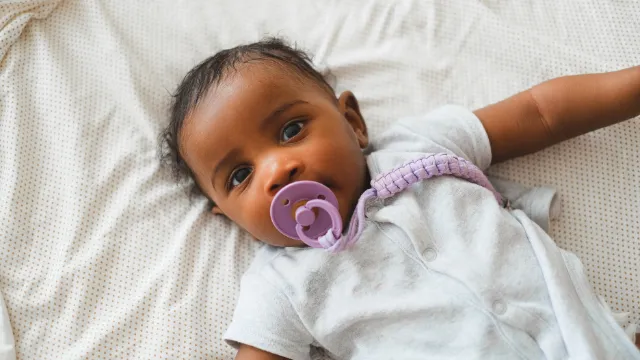
What is the Best Pacifier?

Choosing the Right Pacifier: A Guide for Parents
Pacifiers can be very beneficial for some babies, but with a multitude of options available, finding the perfect one can be overwhelming. Each pacifier has its own set of pros and cons, making the decision even more challenging.
One significant advantage of pacifier use is the ability to soothe a crying baby quickly. However, the key is finding the right pacifier for your little one. Different designs and materials can impact aspects like latch and sucking.
When it comes to choosing the ideal pacifier, look for one with a longer nipple portion that allows the mouth to move naturally and maintains balanced forces. To simplify the selection process, I’ve broken down a few popular pacifiers based on their strengths and weaknesses.
1. Chicco Physioforma Soft Silicone Pacifier & MAM:
These pacifiers feature a flat shape that encourages tongue movement, especially beneficial after oral tie revision. They promote even tongue distribution on the palate, aiding force distribution during sucking and ensuring optimal tongue alignment for the airway.
2. NUK:
NUK pacifiers allow the tongue to elevate naturally and distribute forces equally. With a narrower entry point, they require less mouth opening, similar to the MAM and Chicco Physioforma. This design encourages a motion resembling milking the breast.
3. Philips Avent & Dr. Brown’s HappyPaci:
These pacifiers have a cylinder shape that trains the tongue to elevate and cup. While effective, the force distribution along the palate may be uneven. Dr. Brown’s HappyPaci has a wider entry point, closely mimicking nursing by encouraging a wider mouth opening.
4. NINNI:
NINNI pacifiers, shaped like a nipple, are suitable for babies who are also nursing. However, caution is advised if the baby starts flicking the nipple while nursing. In such cases, switching to a pacifier with a longer nipple portion is recommended.
While pacifiers can offer comfort, it's crucial to avoid prolonged use. Extended pacifier use is linked to improper jaw development, dental issues, and palate concerns that may affect airways. While some suggest weaning from pacifiers around six months, pediatric dentists recommend completing the weaning process by three years. Schedule a consult with one of our doctors today if you want to know how your baby’s pacifier may be affecting their oral development.
